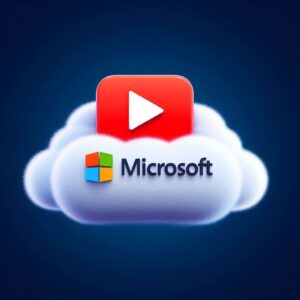Chris Gill Interview

Chris Gill based in New York is a Microsoft MVP and a Manager of Microsoft Applications at a law firm. He has worked in IT for over 19 years with experience in a number of roles. Chris is also a Humans IT Ambassador for Microsoft, a moderator on the Let’s Talk Mental Health Network Group and has presented at large events such as Microsoft Ignite. His passion for supporting the tech community did not go unnoticed when he was recently awarded the Microsoft Most Valued Professional award. I follow Chris on Twitter and even though I have never met him in person, his passion for helping support and grow the Tech community can be seen through his interaction on social media. If you’re not already following Chris on his social media handles, he is an individual to follow.
Chris Gill Interview
Note: If you have any questions or feedback, please use the comment box towards the end of the interview. All comments are reviewed before we approve and notify the interviewee. Thanks
Tell us about yourself?
My name is Chris Gill and I am based in upstate New York. I have been in tech for 19 years in varying roles including Development, Business Analysis, Engineering, Infrastructure, and Architecture. I am currently a Manager of Microsoft Applications at a Law Firm named Nixon Peabody LLP, and consider myself a technology generalist with a learn-it-all approach to many Microsoft technologies.
What is your greatest achievement whilst working in the world of Tech?
My greatest achievements include giving a talk at Microsoft Ignite 2019 with six incredible folks discussing Neurodiversity as a Superpower AND becoming a Microsoft Azure MVP in November 2020. The past few years have certainly been a rollercoaster both personally and professionally – I am incredibly humbled by both opportunities to give back to the community as a whole while having a platform to help grow the community and bring others along in a collective journey.
How did you get into IT?
I found a love for tech as a kid tearing apart and rebuilding toys with microchips simply to learn how they worked and then moved to summer jobs at a local ISP delivering dial-up internet and replacing small business networks. Even though I had attended college initially for Biochemistry (wanted to be a Geneticist), I found myself pivoting to Computer Science and a Robotics program. Over those few years, I worked to help design and implement new campus-wide technology services, helped other students with technology challenges on both Windows and Mac environments, and learned how not to write ASP (spaghetti code) for our department’s website. I was also the guy hosting a music/media server on campus in 1997 over the campus network…shhhhh!
What would you recommend for someone wanting to start a career in IT?
Always follow Rule #1: there are no rules, and everyone is welcome in IT! You do not need to know how to write code to create wonderful and accessible programs for anyone to use. You do not need to understand supercomputers to be able to build an awesome cloud native application. An inquisitive mind and a learn-it-all mindset will get you far, and this holds true for career switchers as well as those just getting started.
How did you get into the world of Microsoft Azure?
I first was curious about Microsoft Azure back when it was released in February 2010 as “Windows Azure”, simply to host virtual machines “in someone else’s datacenter”. Building on experience with Identity Management and Systems Center, my curiosity grew with every new introduced feature from Operations Manager Suite to advancements in Identity and Access Management, to RBAC, and a generally consistent management plane and toolsets to deploy new architecture using ARM and PowerShell. To this day, I am still drawn back to the depth and ever-growing set of features within Microsoft Azure.
What are your areas of expertise? Are you still working with other Microsoft products apart from Microsoft Azure?
While I am considered an Azure expert, I have spent at least 14 of my 19 years living and breathing Microsoft SharePoint and swear by that technology giving me (and other folks) the opportunity to learn every part of the Microsoft ecosystem. From roots in Active Directory, to DNS, Microsoft SQL server, Windows Server, Internet Information Services – the list goes on… My expertise has also expanded over the years into Windows 10 and Endpoint Management including MEMCM, Microsoft 365 security and compliance, SharePoint Online, OneDrive for Business, and even Microsoft Teams. The flexibility to pivot across all of these technologies has led to an incredibly fulfilling “go-to technologist” role allowing me to assist and troubleshoot varying issues at any given time across the entire Microsoft stack.
We noticed that have recently created some content on Azure Log Analytics? What is this product? And what are the benefits of Azure Log Analytics?
Azure Log Analytics is a subset of Azure Monitor and is a tool that can be used to edit and run queries against application and service telemetry data stored in Azure Monitor Logs workspaces. Benefits of this feature include the ability to quickly run pre-formatted example queries against audit and/or activity logs, create custom queries to quickly identify trends and statistics that can be sorted, filtered, and visually charted. In addition, these queries can be run interactively, or they can be saved and run as part of workbooks for automation within Azure and Azure Monitor Alerts or pinned as dashboard tiles. A quick way to get started with Azure Monitor Logs is by visiting this demo portal filled with data to learn and play with: Azure Monitor Logs Demo – Logs Analytics
Do you have any tips for those companies who are nervous about migrating workloads to Microsoft Azure?
There is a large community ready and willing to support your cloud migration efforts – but do your homework first and plan for proper organizational alignment across the business, including identifying accountability resources. Ensure that you have both a solid governance plan as well as a Cloud Adoption Framework established before any workloads are migrated (e.g. naming conventions, cost analysis, boundaries, and service portfolio analysis). It takes a skilled cross-team to manage and secure these workloads, and there are incredible resources available to assist companies with the initial design and management approaches (referring to the Cloud Adoption Framework and the Azure Well-Architected Framework to start). Companies also have the benefit of using Azure Landing Zones to help you establish the necessary best practices and security from the start, creating a cloud ready environment.
There are companies which don’t want to migrate services to Azure because they have applications which need to reside on-premises. Can these companies make use of a Hybrid setup with Azure? What are the benefits of a hybrid setup?
Yes, there are so many incredible opportunities for companies to make use of a hybrid approach to hosting workloads. One great example of this is Azure AppProxy which provides a means of securing remote access to on-premises applications and APIs. Allowing for rich SSO approach to applications, access to these on-premises applications can be managed in a single plane while leveraging security advancements within the Microsoft cloud. The Azure AppProxy supports many different authentication protocols and affords flexibility to many organizations looking to continue hosting an application on-premises.
We noticed that you are a Humans IT Ambassador for Microsoft? Could you please explain what this involves?
The Humans of IT Ambassador program recognizes and empowers real-life humans in IT that are passionate about spreading kindness and doing great things with technology. As part of this incredible program, we were each partnered with a mentee from a historically Black Colleges and Universities student, where we could offer experiences as well as help to enable these future technologists to find their way in both life AND tech! In addition, we also have opportunities to upskill in creating content (such as LinkedIn Learning), taking part in various community events, and participating in Microsoft Reactor sessions to inspire with the latest technologies.
You’re a moderator on the Let’s Talk Mental Health Network Group? Could you please provide us with some details and is this open for anyone to join?
Connected with the Microsoft Humans of IT initiative, the Microsoft Humans of IT Community Mentors App is a modern mentorship app that fosters continuous learning, authentic connection, and any-time (anywhere) access. There are two parts to this application – the Community Mentors App is free for anyone to join and encourages mentorship and general communication with folks across a myriad of experiences and backgrounds. As for the Let’s Talk Mental Health network group, what started as a 5-7 person group has 70+ members providing a safe space to have authentic conversations, general assistance and shared experiences, and thought leadership on how to overcome the stigma of Mental Health/illness. I have both learned a lot from being a moderator, as well as realizing that I also have a lot to learn from others and their individual experiences and insights.
Do you have any tips for those who want to get involved with Microsoft, such as providing feedback on Azure products/services?
One of the best things you can do is start with Microsoft Docs – as services and offerings so frequently get changed, Microsoft documentation does not necessarily follow the same cadence. It’s quite easy to create a pull request through GitHub (as most of the documentation is open source), submit your changes as a pull request, and be part of the greater good. As for submitting feedback, a good place to start is the community feedback page directing you to the Azure Feedback portal on UserVoice (though this will be changed at a future date TBD). In all honesty, some of the best feedback channels are social networks – if you’re having an issue, or experience something that is unexpected, a quick tweet to @AzureSupport will almost certainly gain attention quickly!
What would you recommend for those wanting to get started with managing Azure IaaS workloads?
For those just getting started with managing IaaS workloads, my recommendation at this time would be to start with the Azure pricing calculator to determine cost of any migrated workloads (so there are no surprises). Consider current licensing plans for your organizations/customers as you can reduce costs by investigating and planning Azure Reserved Instances in advance. Then learn Azure Policy, and more importantly upskill in Azure Automanage and/or Azure Arc. The ability to quickly onboard and begin managing your VMs before completing a migration/assessment using Azure Migrate gives you necessary insights on just how much your migrated workload will cost, while providing you with the necessary management guardrails and blueprints for a well-architected tenancy in Microsoft Azure.
How do you keep up to date with the latest Microsoft Azure products?
I’m a member of a few different communities surrounding Azure, but for day-to-day updates, I always start with Azure updates | Microsoft Azure.
A list of thriving and engaging communities:
- https://aka.ms/dapr-discord
- https://aka.ms/itopstalk-discord
- https://azured.slack.com
- https://azurecommunitygroup.slack.com/
What would you recommend for someone who wants to become Azure certified? Everyone learns at a different pace, and from different resources. That said, a great place to start is by simply signing up for a free Azure account/tenant as there are 100’s of free resources to learn from (Free Azure Trial). Additionally, there are tons of online resources to consume, but a great building block are the resources available at Microsoft Learn. This learning path sets the foundation for all Azure topics to come, and I recommend this to everyone asking me where to start: AZ-900 Describe Cloud Concepts. From there, the role-based certifications now cover Identity, Security, Administration, Architecture, Artificial Intelligence, Data Platform, and Development so there is a path (or multiple paths) for everyone, regardless of your experience or where you’re headed in your career progression!
How did you become a Microsoft Certified Trainer (MCT)?
As 2020 was an odd year in general, I was reminded by a friend one day that becoming an MCT had a cost deferral last year (free) for those that met the requirements and were recommended by another community resource that could attest to your abilities to train others on Microsoft technology. I simply reached out to one of my co-workers to attest to my training efforts over the past 10 years (consistent with the length of time I had thought about applying for the MCT), and a few days later, was awarded as an MCT. For folks that are considering this, I highly recommend applying as there is not only a great community ready and waiting to assist you, but there are a TON of resources available to you as a certified trainer (to be used both in training others AND yourself).
What is an MVP? How did you become an MVP (Microsoft Most Valuable Professional)? Having recently attended my first MVP Summit, I can say that the Microsoft MVP award is defined not by technology expertise alone, but by the willingness of this community of experts to share what they know and pitch in to help folks as best they can in times of need. Typically, you will see an MVP replying to someone’s pleas for help to a support handle on social, even before the support organization has a chance to respond. This community is passionate about helping others excel and sharing what we have learned, which makes this an incredible community to be part of. I get asked frequently what is needed to become an MVP – my response is that I don’t quite know the secret sauce required but do know that so long as you continue to be passionate about what you are doing and bring others along for the ride, good things will come your way (and will be rewarded with even harder work)!
What’s next in your Microsoft Azure journey?
Simple, I absolutely love where IoT and AI/ML is heading, so I will continue my side hustles to upskill and learn as much as I can in those areas. Maybe a “blue badge” is in my future – only time will tell!
Do you have any final words of wisdom?
Never stop learning and be authentic in everything – I live by that motto and have been incredibly successful so far in life. Do not live to work, but rather, work to live. Spend time with your friends, your family, your community and “textable tribe” – simply said, find your balance in life…
The most important question of all 😊
From a scale from 1 – 10 how crazy are you about Microsoft Azure? (10 being the highest) As if you had to ask – I eat, sleep, and drink Azure 24/7. A 10, no doubt!
End of Interview
Name: Chris Gill
Website: Configuring Clouds
Twitter: Chris Gill (@cgill) / Twitter
LinkedIn: Christopher Gill – Manager, Microsoft Applications – Nixon Peabody LLP | LinkedIn
Instagram: Chris Gill (@cfgill) • Instagram photos and videos
Facebook: Christopher Gill | Facebook






Hi
This is Saikrishna Koganti, working as Datacenter and Azure Infra cloud architect I would like to join the below communities. Can you please share the slack invite for the below?
https://azured.slack.com
https://azurecommunitygroup.slack.com